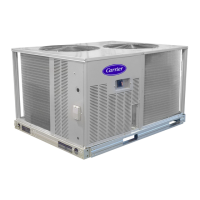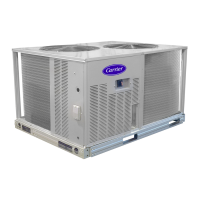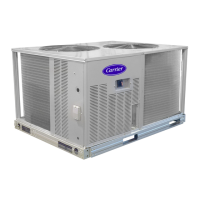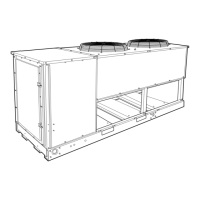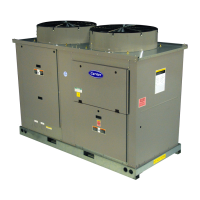PRE-START-UP
System Check
1. The electrical power source must agree with the unit’s nameplate rating.
2. Check all air handler(s) and other equipment auxiliary components. Consult the manufacturer’s instructions
regarding any other equipment connected to the condensing unit. If the unit has field-installed accessories, be
sure all are properly installed and correctly wired. If used, the airflow switch must be properly installed.
3. Check tightness of all electrical connections.
4. Be sure liquid line and low side of the system are properly leak checked and dehydrated.
5. Be sure the unit is properly charged. See “Preliminary Charge”, below.
6. Open the liquid line and suction line service valves.
7. The crankcase heater must be firmly attached to the compressor crankcase. Be sure the crankcase is warm
(heater must be on for 24 hours before starting compressor).
Turn On Crankcase Heater — Turn on the crankcase heater for 24 hours before starting the unit to be sure all the
refrigerant is out of the oil. To energize the crankcase heater, proceed as follows:
1. Set the space thermostat set point above the space temperature so there is no demand for cooling.
2. Close the field disconnect.
Preliminary Charge — Before starting the unit, charge liquid refrigerant into the high side of the system through the
liquid service valve. The amount of refrigerant added must be at least 80% of the operating charge listed in the
Physical Data table. Allow high and low side pressures to equalize before starting compressor. If pressures do not
equalize readily, charge vapor on low side of system to assure charge in the evaporator. Refer to GTAC II, Module 5,
Charging, Recover, Recycling, and Reclamation for liquid charging procedures.
IMPORTANT: Before beginning Pre-Start-Up or Start-Up, review Start-Up Checklist at the back of this book. The
Checklist assures proper start-up of a unit and provides a record of unit condition, application requirements,
system information, and operation at initial start-up.
Failure to follow this caution may result in equipment damage.
Do not attempt to start the condensing unit, even momentarily, until the following steps have been completed.
Compressor damage may result.
Failure to follow this caution may result in equipment damage.
Prior to starting compressor, a preliminary charge of refrigerant must be added to avoid possible compressor damage.
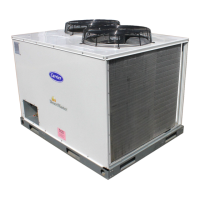
